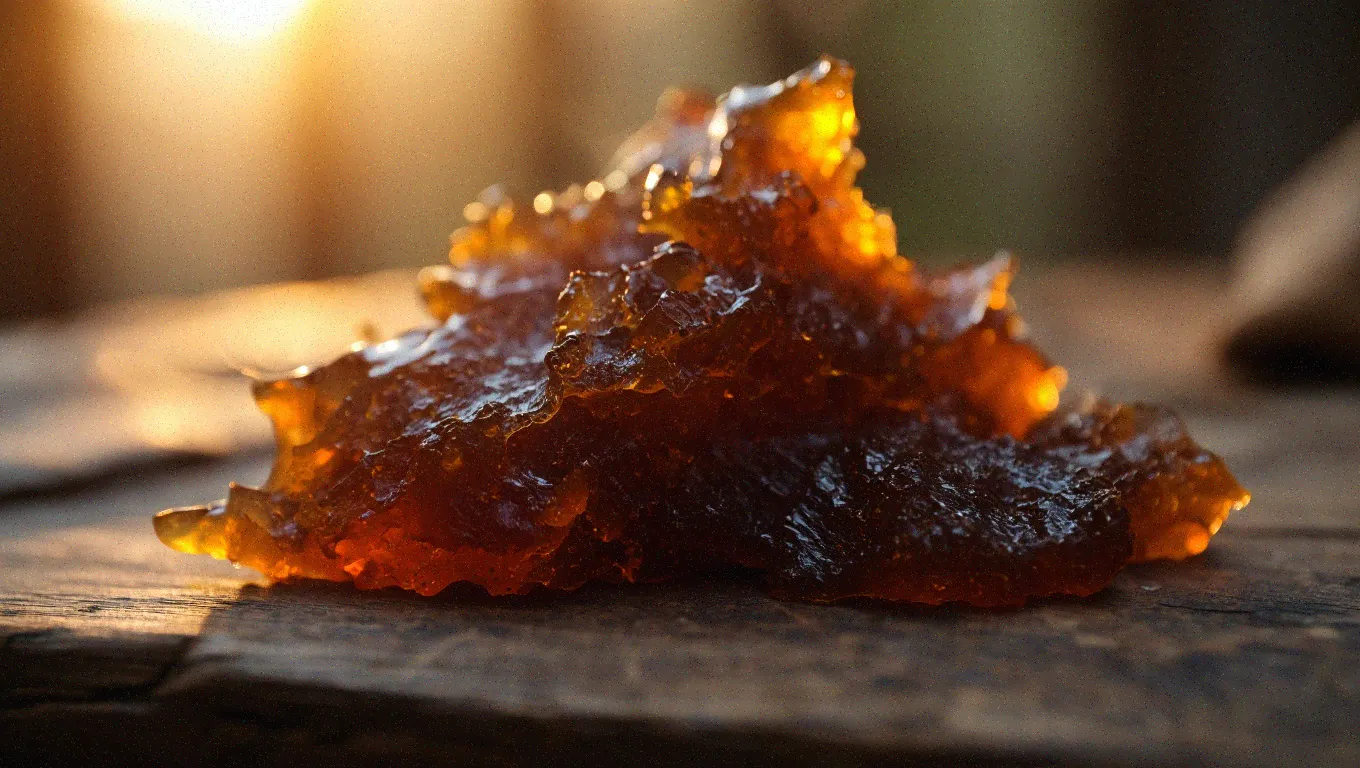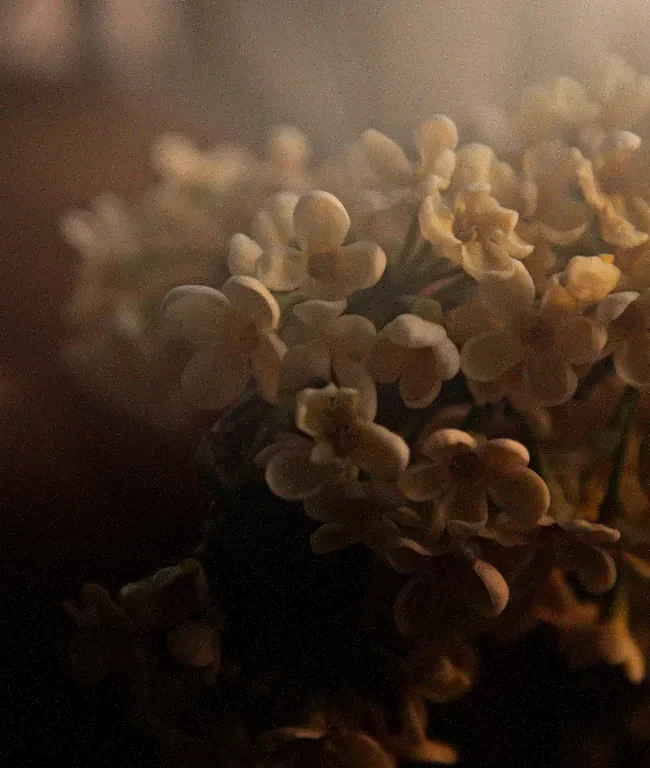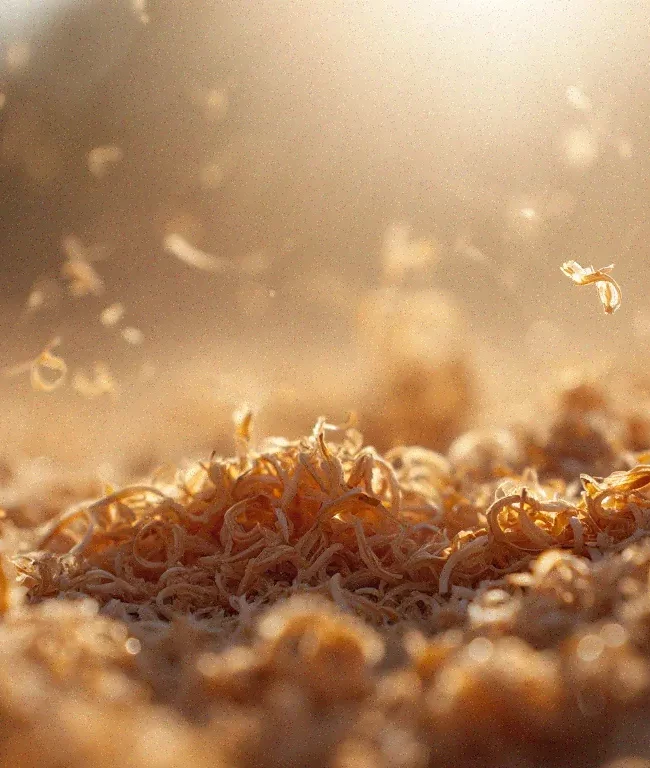
Labdanum’s Sweet Balsamic Molecules: Chemical Analysis and Synthetic Alternatives
Labdanum’s signature sweet balsamic character originates primarily from vanillin compounds, sclareol, and supporting phenolics rather than the labdane diterpenes themselves. The major labdane-type diterpenes (manoyloxides) that dominate labdanum’s composition (~75%) function as fixatives and provide structural complexity, but contribute minimal direct sweetness. This creates opportunities for targeted enhancement using specific synthetic molecules that amplify the sweet balsamic notes while reducing animalic intensity.
Chemical composition reveals sweet vs non-sweet contributors
Labdanum absolute contains over 300 identified compounds, with significant variations based on geographical origin and extraction method. The Cretan variety shows exceptionally high manoyloxide content, while Spanish samples are dominated by simple alkanes with trace manoyloxides.
The major component classes break down as: labdane-type diterpenes (75% of absolute), methylated flavonoids (15%), and sesquiterpenes/phenylpropanoids/fatty acids (10%). However, the compounds responsible for sweet balsamic character represent only a small fraction of the total composition.
Primary sweet-contributing molecules include:
- Vanillin and coumarin compounds – explicitly identified as primary sweet contributors with creamy, spicy, phenolic character
- Sclareol (CAS: 515-03-7) – a labdane diterpene with “sweet balsamic scent” and woody-amber nuances, used as ambergris substitute
- Viridiflorol (11.8-22.6%) – provides major amber-like, sweet notes with balsamic character
- Bornyl acetate (3.1-16.7%) – sweet, balsamic ester contributing to overall sweetness
- Methylated flavonoids – contribute honey-like sweetness complexity
The dominant manoyloxide compounds (manoyloxide A, 3-acetoxy-manoyloxide, epi-manoyloxide) show “no odor descriptions” and are classified “not for fragrance use,” confirming these provide fixation rather than direct olfactory impact.
Three recommended synthetic molecules for enhanced balsamic sweetness
Based on comprehensive analysis of commercial availability, potency, and compatibility, three specific molecules emerge as optimal for enhancing labdanum’s sweet balsamic character:
1. Benzyl Benzoate (CAS: 120-51-4)
- Odor profile: Sweet, balsamic, slightly almond-like with significantly stronger balsamic character than cinnamyl cinnamate
- Usage level: 0.3-0.7% in labdanum accords (0.1-1% maximum)
- Commercial availability: Widely available as commodity ingredient ($20-50/kg)
- Key advantage: Component of Peru balsam with proven balsamic sweetness enhancement
2. Javanol (CAS: 198404-98-7, Givaudan)
- Odor profile: Creamy sandalwood with rosy, woody character and sweet balsamic undertones; powerful and long-lasting
- Usage level: 0.1-0.3% in labdanum accords (up to 2% maximum)
- Commercial availability: Through Givaudan and specialty suppliers like Pell Wall ($200-500/kg)
- Key advantage: Modern synthetic providing rosy-balsamic lift without gourmand heaviness
3. Ethyl Vanillin + Benzoin Siam combination
- Ethyl Vanillin usage: 2-10 parts in amber accords (more potent than vanillin)
- Benzoin Siam usage: 2-3% of total composition
- Commercial availability: Both widely available; benzoin through specialty suppliers ($100-300/kg)
- Key advantage: Proven synergistic combination providing complex balsamic sweetness without artificial character
Practical formulation strategies minimize animalic notes
Professional formulation research reveals specific strategies for reducing animalic character while preserving sweetness. The key insight is that vanillin balances labdanum after maturation, requiring 2-6 weeks aging for optimal sweet-animalic balance.
Recommended base formulation approach:
- Primary accord: Benzoin Siam 20 parts + Labdanum 5 parts + Enhanced Vanillin 1 part
- Synthetic enhancement: Benzyl benzoate 0.5-1% + Javanol 0.1-0.3%
- Smoothing agents: Galaxolide or similar synthetic musks 5-15% of total accord
- Dilution strategy: Use 10% labdanum solutions in DPG to minimize animalic impact
Critical processing recommendations:
- Start with highly diluted solutions (1-10% labdanum) for initial testing
- Allow minimum 2-week maturation for vanillin-labdanum balance to develop
- Use citrus top notes (bergamot, lime) to mask initial animalic opening
- Include floral heart notes (rose, jasmine) to soften animalic edges during middle development
Commercial availability and cost optimization
The synthetic alternatives range from commodity to specialty pricing. Benzyl benzoate offers the most cost-effective enhancement at $20-50/kg, while Javanol represents premium positioning at $200-500/kg. Natural benzoin resinoids provide excellent value at $100-300/kg with complex sweetness profiles.
IFRA compliance considerations apply to several recommended molecules. Benzyl salicylate, cinnamates, and Peru balsam derivatives have usage restrictions due to sensitization potential, requiring verification against current standards.
Supply chain advantages favor synthetic approaches over natural labdanum harvesting. Enhanced stability reduces waste from spoilage, while consistent supply chains avoid seasonal variations that affect natural material quality and pricing.
Odor thresholds and usage optimization
While specific detection thresholds for individual labdanum components remain unpublished, practical usage data from professional sources provides clear guidance. Labdanum absolute typically appears at 0.5-5% in finished compositions, with professional dilutions at 10-50% standard for handling.
The recommended synthetic enhancers show favorable threshold characteristics:
- Benzyl benzoate: Detectable at very low concentrations with strong balsamic impact
- Javanol: Described as “powerful and long-lasting” suggesting excellent odor value
- Enhanced vanillin combinations: Develop complexity after maturation, improving cost-effectiveness over time
Key formulation insight: Rather than attempting to replace labdanum entirely, the optimal strategy uses targeted synthetic enhancement of its natural sweet balsamic character while maintaining the irreplaceable complexity provided by the natural diterpene matrix.
Conclusion
Labdanum’s sweet balsamic character can be significantly enhanced using three specific molecules: benzyl benzoate for core balsamic sweetness, Javanol for modern rosy-balsamic lift, and ethyl vanillin with benzoin Siam for complex sweetness depth. These provide stronger balsamic sweetness than cinnamyl cinnamate while avoiding gourmand vanilla character, achieving the goal of amplifying labdanum’s signature sweetness while reducing animalic prominence through proper dilution and maturation techniques. For practical formulation guidance implementing these molecular insights, see our complete labdanum replacement formulation guide.





Pingback: Labdanum Replacer Accord: Complete Formulation Guide - olfactive aesthetics author's niche perfumery
October 5, 2025